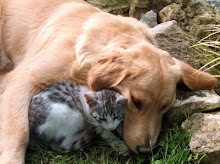
No More Homeless Pets in Utah has completed a successful relocation of a feral cat colony this spring. This is BIG news, as relocating feral cats takes time, patience, and a lot of luck. Relocation is a last recourse for resolving feral colony issues, and done when all other mediation and communications have not worked.
Our relocation started with unreconcilable issues between property owner(s) that no longer wanted the feral cats on the property, and the caregiver that had feed, fixed, and protected the cats for years. The property owner started trapping the cats and taking them to the local Animal Services for euthanasia, so action had to be taken to save the rest of the colony. After much searching, a suitable legal relocation site was located for the remaining cats.
So what goes into relocation? First you have to choose a proper location where the cats can live safely. There must be someone that will commit to caring for the colony, by making sure there is fresh water, food, and care daily. There has to be some place on the property where a large relocation cage can be set up to house the cats for about 3 weeks, while they get used to the smells, sounds, and sights of their new environment. Yes, you have to cage the feral cats for about 3 weeks to make this work; otherwise they will just wander away or go back to their old location.
Now, you have you wonderful, safe, new location. You have set up the cage; you have food, water, shelters, litter boxes, and everything you need to make this work. Now what, you have to trap all the cats to take to the new site. Depending on how many cats there are, this can be a major task, especially if this is an older colony that has already been trapped once to get the cats fixed. So now, you are using every trick, ploy, deception, and treat you can think of to get these cats to enter a trap. When you catch them, you take them to your vet for updated vaccinations, fix any cats that have not been ear tipped, and then off to the new location. The cats are housed for about 3 weeks in their new area, and then released to live out their lives.
This is the process that we did on our recent relocation. We consider it a great success, even though a couple of the cats actually turned back up at their original location.
If you would like to learn more about feral cats, please attend our monthly seminars on “Do you Love or Loathe Feral Cats”. Our schedule is on the No More Homeless Pets in Utah website under feral cats at www.utahpets.org.
-Daye Abbott, Feral Fix Director


Great Job Daye!
ReplyDeleteHi guys very intresting public sex positions Feral cats are descended from domestic cats but are born and live without human contact. Any environment that sustains people can sustain feral cats, who are known to have thrived in urban, suburban, and rural areas in all parts of the civilized world. They are not to be confused with wild cats or with stray cats (alley cats). Wild cats are descendants of wild species. Stray cats are homeless or abandoned domestic cats, but unlike feral cats, have had prior contact with humans and therefore exhibit temperament similar to that of a domestic cat.
ReplyDeleteExcellent and informative blog. Thanks for posting this. It’s informative and enlightening. Keep up the good work.
ReplyDeleteRemovalists brisbane
A bunch of students at UVU are working toward starting a TNR program at the school, but we were just informed that even if we do this, the groundskeepers are still planning on trapping the cats and taking them to the shelter to be euthanized, so we're trying to find a new place to relocate them, but we're having difficulty doing so. Do you have any specific pointers or suggestions of places they can go? Any help or advice would be great, thank you!
ReplyDelete-Paige